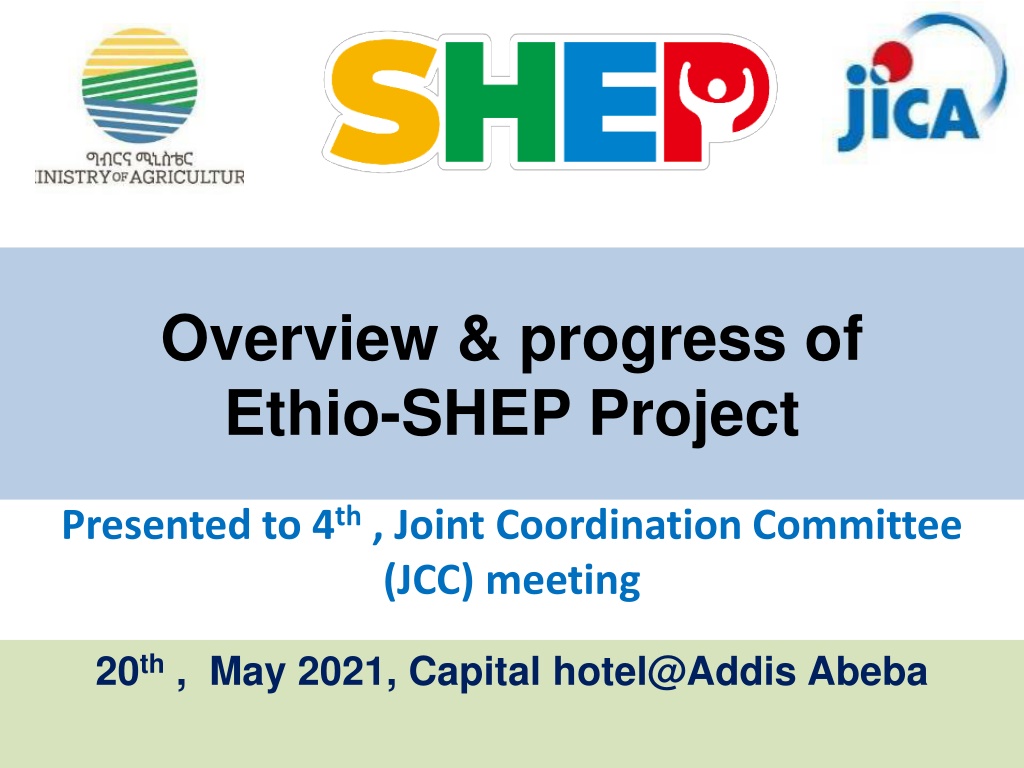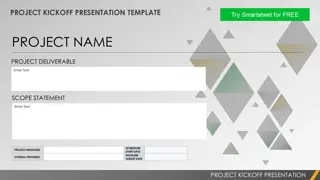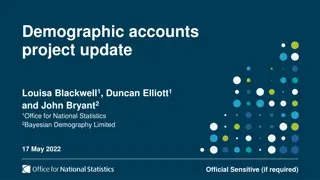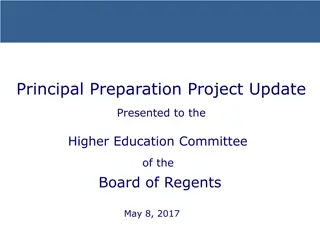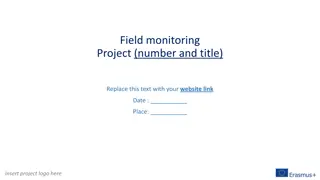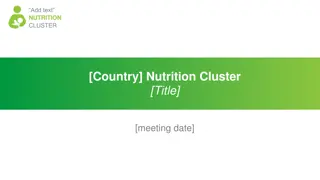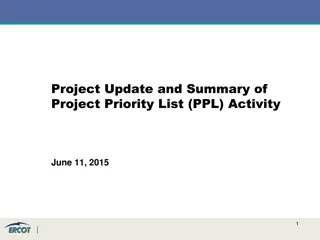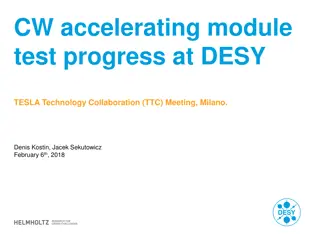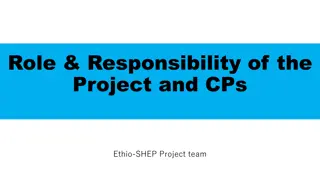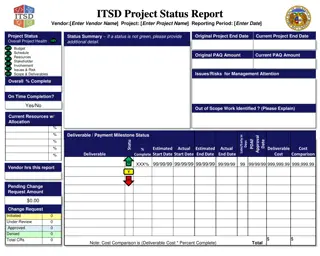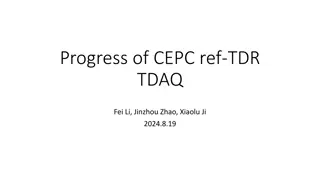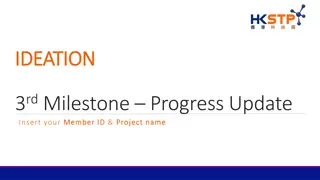Ethio-SHEP Project Overview and Progress Update
The Ethio-SHEP project aims to empower smallholder farmers in Amhara and Oromia Regions through market-oriented agriculture. Implemented by a joint team, the project focuses on capacity building, income generation, and effective extension services. Utilizing a four-step approach, the project has reached a significant number of people through various activities, benefiting both farmers and stakeholders involved in the agricultural sector.
Download Presentation

Please find below an Image/Link to download the presentation.
The content on the website is provided AS IS for your information and personal use only. It may not be sold, licensed, or shared on other websites without obtaining consent from the author.If you encounter any issues during the download, it is possible that the publisher has removed the file from their server.
You are allowed to download the files provided on this website for personal or commercial use, subject to the condition that they are used lawfully. All files are the property of their respective owners.
The content on the website is provided AS IS for your information and personal use only. It may not be sold, licensed, or shared on other websites without obtaining consent from the author.
E N D
Presentation Transcript
Overview & progress of Ethio-SHEP Project Presented to 4th , Joint Coordination Committee (JCC) meeting 20th , May 2021, Capital hotel@Addis Abeba
Description of the project Ethio-SHEP is a five-year Technical Cooperation project which promotes Market- Oriented Agriculture for small holder farmers. The project targets Amhara and Oromia Regions and is jointly implemented by Ethio-SHEP project team, MoA, OBoANR and ABoA. The Project for Smallholder Horticulture Farmer Empowerment through Title Promotion of Market-Oriented Agriculture Ethio-SHEP Jan 2017 Jan 2023 6 years Duration - Federal MoA (Horticulture Development & Technology Transfer Directorate) Counterpart - Amhara Bureau of Agriculture (ABoA) Organization - Oromia Bureau of Agriculture and Natural Resources (OBoANR) Amhara and Oromia Regions - Four zones (Two from each region) Target Area - 14 woredas (seven from each region)
1. Objective of 1. Objective of Ethio Ethio- -SHEP intervention SHEP intervention Capacity building ofthe target farmers through series of practical activities. Increase the income of the target farmers from the Horticulture production. Contribute to strengthen the existing extension to be more effective Market-Oriented & Demand-driven extension service using SHEP approach. Farmers to change their mind set from Grow and sell (Subsistence farming) to Grow to sell ( Producing for market Realizing Farming as business )
3. Essential SHEP 4 steps 3. Essential SHEP 4 steps Essential 4 steps 1. To share the goal with farmers SHEP Activities /Selection of Target Beneficiaries(farmer groups) /Sensitization WS Farmer s Relatedness 2.Farmer s awareness is raised. /Participatory Baseline Survey /Market Survey /Market linkage Forum(Input & Output) Farmer s Autonomy Farmer s Competence 3.Farmers make decisions /Crop selection, /Crop calendar making etc 4.Farmers acquire skill /Demand Driven In-Field Training for Farmers(Basic Cultivation skill, Post harvest handling etc) Follow up and monitoring (Including Participatory End-line survey)
Picture based Horticulture extension materials (Kamishibai) in two local languages
Peoples reached by the project Through participating in various SHEP activities, such as, field days and exchange visits, periodic monitoring, sensitization workshops, technical trainings for farmers and experts, market linkage forums and market survey, baseline and end line surveys etc., the project reached 35,775 people during the 4 cycles of intervention as detailed below: 22,661 farmers (M= 17,528, F= 5133) of which 1171 direct beneficiaries 12,518 counterparts (government staff) 596 participants from private sector, unions, universities
.people reached by the project 1st cycle 2nd cycle 3rd 4th cycle Stakeholders Total cycle Farmers M F M F M F M F M F 2708 781 5559 1732 9026 2530 235 90 17528 5133 CPs 1636 3567 7203 112 12518 Private sector, 81 190 325 0 596 Unions, Universities Total Total 35,775
Voice from Farmers Last year I was lucky year I was lucky to be nominated by the group as one of the participants for the exchange visit to Ziway Meki area organized by the project and I observed the same Ethiopian farmers are doing different cultivation techniques cultivation techniques and getting the huge profits getting the huge profits from Horticulture production , I was really motivated so after I came back home, I shared what I observed in Meki with my husband and this year we worked together and applied in our farmland with our locally available materials like staking and proper spacing management etc . Ofcourse woreda & kebele experts also supported us technically, and some of the other member farmers also started to apply several practices from Meki area, I hope we can get good result for this year. doing different (Farmer fromGibe ketchema kebele at seka chokorsa woreda,Jimma zone )
Profit and cost for potato, head cabbage, onion and tomatoes
Higher official visit of project sites His excellency ,Mr Wondale and Mr Abdella, conducted field visit in Zufari kebele in Banja woreda,24th January 2021 and discussed with host farmers, As and woreda experts.
HDTT team visiting field activities in Zufari kebele in Banja woreda The team discussed with woreda officials and farmers and learnt that: Training was given for farmer groups Market survey organized at zufari kebele market Experience sharing was conducted between farmers groups Scaling up of Ethio-SHEP best practices were demonstrated (on carrot and beetroot) to neighboring farmers established as one group of eight members
HDTT team visited Jabi,Dembecha and S/Achefer woreda Visited field activities of various vegetable crops and demos Discussed with Farmers, kebele and woreda focal persons Participated in field day in S/Achefer woreda HDTT team compiled field assessment report and final report and shared to JICA and SHEP project
Follow up support HDTT team conducted field visit and discussed with woreda officials, focal persons and kebele DAs and gave technical back up in 7 woredas of Arsi and Jimma zones
Major Achievements According to the result of Baseline and End line survey conducted by external consultants ,2021 shows: Achievements Factors contribute Due to the Ethio-SHEP step-by-step approach (ex. Market survey, crop selection, crop calendar making) Farmers' mindset is changed towards farming as business Farmers start communicating with trader before harvesting. During market survey, famers built the relationship with traders. Farmers relationship with wholesalers improved. Farmers start communicating with trader several times rather than once during harvesting. Farmers income from horticulture significantly increased Due to adjusting crop calendar to target high price season. Vegetable production is labour intensive, so farmers start hiring local labour (particulary for onion, garlic production) Employment creation observed
Challenges Challenges How to overcome Frequency of monitoring and field support for target groups were reduced due to COVID-19 Project provided PPE to all target woredas, so that will enhance their follow-up activities. Access to reliable input/seeds suppliers critical and bottle neck Facilitate linkage with not only private sectors but also cooperative/unions (ex. Zangana union) to get improved varieties Less documentation and report flow from kebele to upper levels Planning to strengthen their reporting system with Monitoring & Evaluation directorate. Need to be identified more best practices and scale up activities done by our counterparts. Following up Ethio-SHEP best practice with Extension directorate.
